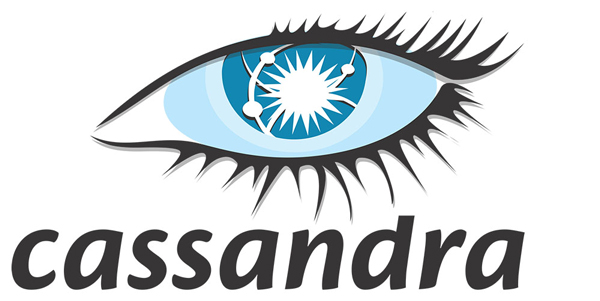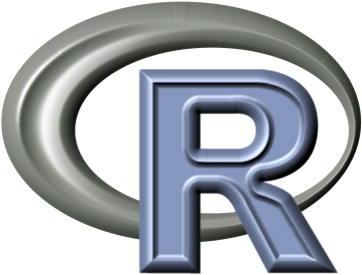5 best open source tools for Big Data solutions
Gone are the days when businesses / organizations only used papers to store customer information (such as names, photos, sample signatures .). Come to think of it, it was a time when books with all sorts of thick data were on the throne and were always in the offices, so that whenever it needed to update any details, the staff would take all day work to search and edit. Customers also have to wait for hours to a few days just to solve such small problems.
In addition to the tediousness of finding data from ledgers, those paper files can also be lost at any time due to disasters such as floods or fires, not to mention the degradation of paper materials. sheet used.
Going back to today's modern story, it is great that almost normal to important jobs are gradually being automated. Automation is essential to shorten the time it takes to get the job done, so it requires data to be processed at a fast rate, as quickly as possible. The term " Big Data " appears from here.

Big data generally involves data sets that are so large and complex that traditional data processing software is unable to collect, manage and process data in a reasonable amount of time. .
There are now many great tools used for managing Big Data and it's hard to judge which one is the best. In this article, Quantrimang offers 5 names that are most appreciated by experts for Big Data solutions mentioned in the beginning. So what tools are they?
1. Apache Hadoop

Apache Hadoop is the most prominent and used tool in the field of Big Data with the ability to handle large-scale data. This is a 100% open source framework that allows distributed processing of large data sets on clusters of computers through a simple programming model. Hadoop is designed to scale from a single server to thousands of other computers with local computation and storage. Moreover, it can run on cloud infrastructure. Hadoop includes four parts:
- Hadoop Distributed File System: Commonly known as HDFS, is a distributed file system that provides high bandwidth access to data mining applications.
- MapReduce: A programming model for handling large data.
- YARN: This is a platform used to manage and schedule Hadoop resources, in the Hadoop infrastructure.
- Libraries: Help other modules to work with Hadoop.
2. Apache Storm

The Apache Storm is an extremely low-latency thread processing framework and is probably the best option for near-real-time processing. The unique features of Apache Storm are:
- Large scalability.
- The ability does not cause disruption to the system.
- "Fail fast, auto restart" approach.
- Guaranteed process of every tuple.
- Write in Clojure.
- Run on Java virtual machine.
- Support direct acrylic graph (Direct Acrylic Graph - DAG) link structure.
- Support multiple languages.
- Support protocols like JSON.
Storm's work is similar to MapReduce, but Storm processes stream data in real time instead of batch processing. Based on the topology configuration, Storm distributes the workload for the nodes. It can also interact with Hadoop's HDFS through adapters if needed, which is a difference that makes Storm an extremely useful open source Big Data tool.
3. Cassandra

Apache Cassandra is a distributed database, managing a large data set on separate servers. This is one of the best Big Data tools, mainly handling structured data sets. In addition, it has certain capabilities that no relational database and non-relational databases can provide. These possibilities are:
- Available continuously as a data source.
- Linear expansion performance.
- Simple operation.
- Easily distribute data across multiple data centers.
- Available on the cloud.
- Ability of extension.
- Good performance.
Apache Cassandra does not follow the Master-Slave architecture but all nodes have the same role. It can handle multiple operations simultaneously on data centers. Therefore, adding a new node will not affect the existing cluster even at the time of work.
4. KNIME

KNIME full name is Konstanz Information Miner, is an open source data analysis, integration and reporting platform. It integrates various components of data mining and machine learning through the module data pipeline concept. The graphical user interface allows the assembly of nodes to pre-process data (including extraction, conversion and loading), data modeling, visualization and data analysis. Since 2006, KNIME has been widely used in pharmaceutical research and is currently expanding into areas such as customer data analysis in CRM, financial data analysis and smart business.
Features and characteristics:
- KNIME is written in Java and based on Eclipse, using scalability to add plugins and provide additional functionality.
- The KNIME core version includes modules for data integration, data conversion and commonly used methods for visualizing and analyzing data.
- KNIME allows users to create data streams and selectively select one or all of them.
- KNIME workflows can also be used as data sets to create report templates, which can be exported to various document formats such as doc, PPT .
KNIME's core architecture allows processing large amounts of data and is limited only by the available hard disk space. - Additional plugins allow integration of different methods for image mining, text extraction as well as time series analysis.
5. R programming tool

This is one of the open source tools widely used in the Big Data field for data analysis. The important thing that R is extremely popular with is that although used for statistical analysis, users do not need to be a real statistical expert. R has a CRAN (Comprehensive R Archive Network) public library that includes more than 9000 modules and algorithms for its statistical analysis.
R can run on Windows and Linux servers as well as inside SQL servers, it also supports other tools like Hadoop and Spark. One can use the R tool to work on discrete data or try to analyze a new analytical algorithm. It can be assessed that R is an extremely flexible language, an R model built and tested on local data sources can easily be implemented in other servers.
That is all. If you think that Quantum has missed an important tool on this list, please comment below to add it to Quantrimang.
See more:
- Big data - hidden friend and snatch
- 10 tips for businesses before deciding to invest in Big Data
- Top 5 programming languages to develop AI
- The world's 5 most annoying 'programming languages'
You should read it
May be interested
- Can open source technology make money?
 open source technology is everywhere, on phones, laptops, or even the websites you open. thousands of companies have opted for open source business. but how can they earn money from something offered for free like open source?
open source technology is everywhere, on phones, laptops, or even the websites you open. thousands of companies have opted for open source business. but how can they earn money from something offered for free like open source? - What is open source software?
 open source software (oss) is a software that source code can be viewed and changed by the public.
open source software (oss) is a software that source code can be viewed and changed by the public. - 4 great benefits of using open source software
 there is an open source alternative to almost any proprietary application. it's just a matter of finding it. while we don't exclusively use open source software, many people prefer it to proprietary software for a number of reasons.
there is an open source alternative to almost any proprietary application. it's just a matter of finding it. while we don't exclusively use open source software, many people prefer it to proprietary software for a number of reasons. - 10 best open source web browsers
 you all know about the best mainstream web browsers like chrome, opera, safari, etc. but what about open source browsers? if you like to use open source software, there are many options available to you.
you all know about the best mainstream web browsers like chrome, opera, safari, etc. but what about open source browsers? if you like to use open source software, there are many options available to you. - What is source code? Learn about Source Code
 source code or open source are probably terms you see often, such as open source games or open source software. so what exactly is source code, what is source code, what is open source code and what is closed source code? we will find the answer together through the article below.
source code or open source are probably terms you see often, such as open source games or open source software. so what exactly is source code, what is source code, what is open source code and what is closed source code? we will find the answer together through the article below. - Intel CVAT, a handy open source data annotation toolkit
 to reduce the burden on data annotation experts as well as data scientists, intel has released a new program with open source, which is a computer visual annotation tool (computer vision annotation tool). - cvat).
to reduce the burden on data annotation experts as well as data scientists, intel has released a new program with open source, which is a computer visual annotation tool (computer vision annotation tool). - cvat). - What is the difference between open source software and closed source software?
 everything you see on the screen includes the language. someone wrote down words for your computer to understand. these words, or languages, are called codes.
everything you see on the screen includes the language. someone wrote down words for your computer to understand. these words, or languages, are called codes. - 8 best open source NAS operating systems for Linux
 nas (network attached storage) helps troubleshoot data storage and concentration issues in one location. this is where people can access and share data 24/7 via the network.
nas (network attached storage) helps troubleshoot data storage and concentration issues in one location. this is where people can access and share data 24/7 via the network. - 10 Open Source Android Apps You Can't Live Without
 after years of using android phones, many people have become familiar with a number of open source android apps. these apps are better than their closed source counterparts.
after years of using android phones, many people have become familiar with a number of open source android apps. these apps are better than their closed source counterparts. - 10 things to know about open source software
 with the aim of helping open source users stay alert, we think it will be helpful to list some things people should know about open source before using it.
with the aim of helping open source users stay alert, we think it will be helpful to list some things people should know about open source before using it.










 The most bizarre inventions CES 2019
The most bizarre inventions CES 2019 10 interesting facts about Python programming language
10 interesting facts about Python programming language LG: Still 'too early' for the blooming of foldable smartphones
LG: Still 'too early' for the blooming of foldable smartphones Samsung Galaxy S10 is a great product, but is it worth the upgrade?
Samsung Galaxy S10 is a great product, but is it worth the upgrade? Things on Windows 10 make users disappointed
Things on Windows 10 make users disappointed Forget the folding screen phone, this is the smartphone you really need!
Forget the folding screen phone, this is the smartphone you really need!